Wood filament brings a new aesthetic to your 3D prints. Read on to learn about the best wood PLA filament brands!
The advent of wood 3D printing was around 2012, when sawdust began being added to PLA filaments for a wood-like appearance. The early experiments, however, showed that sawdust wasn’t the best solution for wood 3D printing nor wood filaments.
These days, wood filaments are still PLA-based, but the wood is instead integrated in the form of wooden fibers. Many different types of wood have emerged, as well! You can now choose between birch, coconut, bamboo, timber, cedar, and many others. Typically, wood filaments contain 70% PLA and 30% wooden fibers, but it all really depends on the filament manufacturer.
Despite this seemingly low proportion of wood, we guarantee you’ll be impressed with just how wood-like the resulting prints feel. From texture to smell, everything feels very real. This means wood 3D printed parts can be treated as real wood. In other words, it’s safe to sand the parts and apply different paints and coatings.
One thing to keep in mind that you might not be aware of is the smell of melting wood filaments. During printing, it basically smells like burning wood, so be sure to have proper ventilation.
In this article, we’ll take you through some more printing tips for wood PLA filaments before diving into the best brands around.
How to Print with Wood Filament
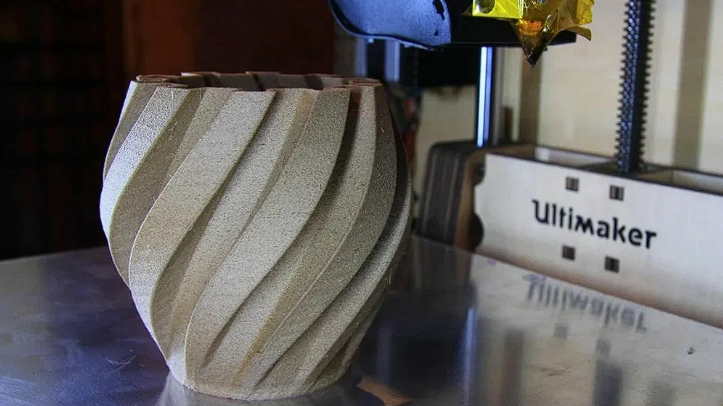
Considering that wood filament is a composite material, it requires some tweaks to be done in the slicer settings to ensure reliable printing.
For starters, it’s important to know that you shouldn’t be using nozzles smaller than 0.4 mm. Otherwise, the wood fibers from the filament can get stuck in the nozzle and be burnt, which results in a clogged nozzle.
Also related to the topic of nozzle clogging, make sure to remove the wood filament from the print head as soon as possible after the print finishes. If that’s not done, the remaining filament can get very hot if it stays in the nozzle and create a burning smell as well as a nozzle clog.
It’s all about ensuring a good flow through the printhead while working with wood filament. Increasing retraction speeds helps reduce stringing and nozzle clogging, while larger layer heights and faster printing speeds help ensure a steady flow during the printing process.
With that in mind, let’s take a look at our choices for the best wood filaments currently available.
Amolen
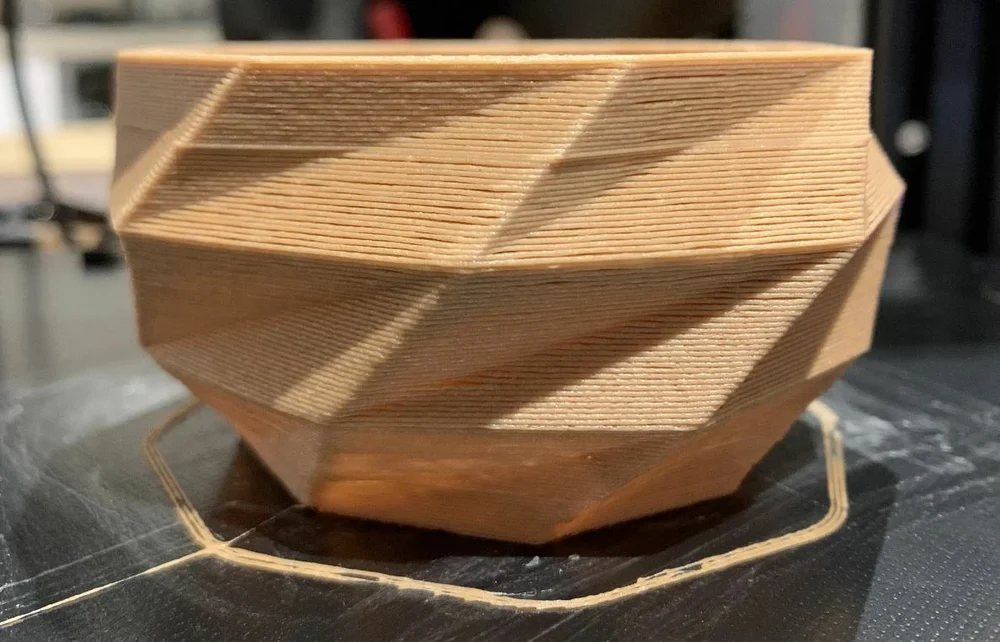
Amolen is a manufacturer of a wide variety of special 3D printing filaments, including multicolor, food-safe, and of course, wood PLA. Amolen’s wood PLA comes in six colors, each made to resemble a different type of wood, like walnut, bamboo, rosewood, redwood, ebony, and “regular” wood. And, if you can’t limit yourself to just one wood color, they also sell multi-packs that contain smaller spools of multiple colors.
Amolen states that their wood filaments contain 30% wood fibers, which makes sense considering how much the prints made in the filament look like real wood. The manufacturer also mentions that the filament shouldn’t run into any warping, clogging, or bubbling during the printing process. These claims are supported by the many reviews where many users mentioned that they achieved high-quality prints without much tuning and with few issues.
- Composition: 70% PLA, 30% wood
- Color options: Walnut, bamboo, rose, red, ebony, wood
- Diameter: 1.75 mm
- Spool size: 1 kg
- Price per spool: ~$34
- Printing temperatures: 190-220 °C (hot end), 0-50 °C (bed)
ColorFabb: WoodFill & CorkFill
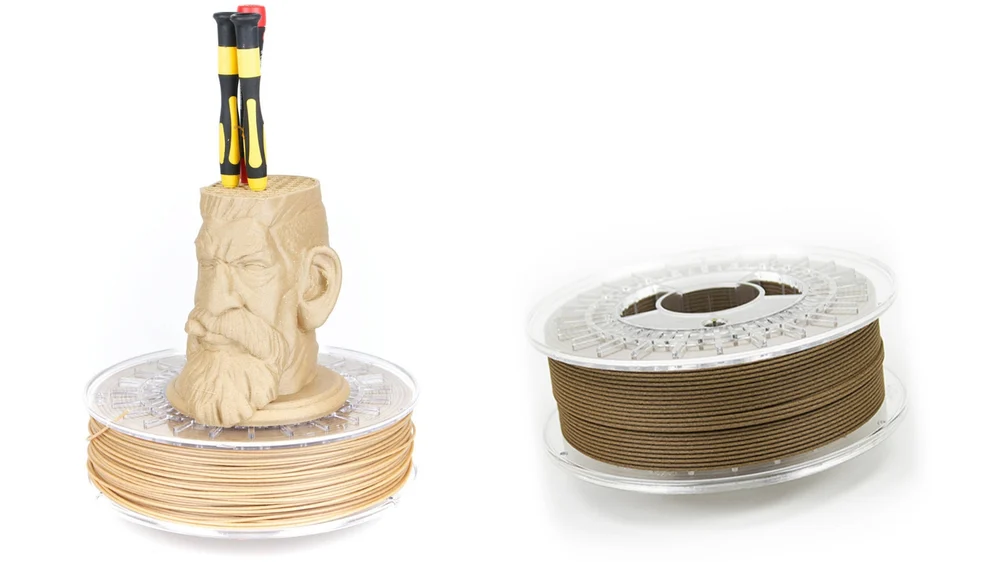
Arguably one of the most exclusive FDM filament manufacturers is the Dutch firm ColorFabb. ColorFabb’s filaments are among the most expensive on the market, but they’re certainly worth it. As you’d expect from a premium filament, the surface finish of the final parts is stunning. The filaments smell nice and are relatively easy to print with.
If you wish to post-process your parts printed with either CorkFill or WoodFill, you can freely do so. Both of the filaments are easily sanded and can therefore provide an even better surface finish.
If you have a large enough budget, we highly recommend you try these phenomenal filaments.
- Composition: 70% PLA, 30% wood
- Wood options: Pinewood, cork
- Diameters: 1.75 mm, 2.85 mm
- Spool sizes: 600 g, 1.8 kg (WoodFill); 650 g (CorkFill)
- Prices per spool: ~$42 (600 & 650 g), ~$100 (1.8 kg)
- Printing temperatures:
- WoodFill: 195-220 °C (hot end), 0-60 °C (bed)
- CorkFill: 210-230 °C (hot end), 0-60 °C (bed)
Fiberology
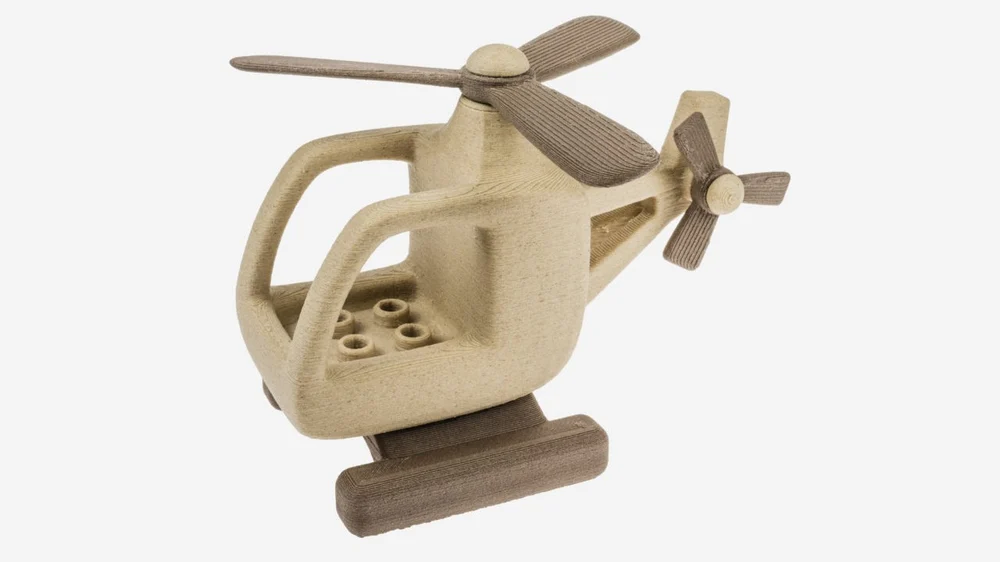
FiberWood comes from Fiberology, another company that specializes in making 3D printing filaments. FiberWood is available in five colors, some with a more “natural” appearance than others. Nonetheless, FiberWood is a great wood PLA filament that Fiberology recommends for printing toys, containers, and other models that you might want to look like they’re made out of wood.
The manufacturer states that the filament maintains a diameter tolerance of just 0.02 mm, which is very impressive and indicates that you shouldn’t run into hot end clogs when printing FiberWood. It’s also worth pointing out that you might need to use a bed temperature slightly higher than normal PLA, per Fiberology’s printing recommendations (70 °C). Other than that, FiberWood should be fairly easy to print
- Composition: 70% PLA, 30% wood
- Color options: White, natural, carmine, brown, black
- Diameters: 1.75 mm, 2.85 mm
- Spool size: 750 g
- Price per spool: ~$44
- Printing temperatures: 190-210 °C (hot end), 50-70 °C (bed)
Filamentive

Filamentive is a pioneer in eco-conscious filaments, offering a wide range of filaments made from recycled materials. The company offers two different colors of wood filament. Since the company’s philosophy is all about the importance of recycled materials, the filament comes on a cardboard spool inside a cardboard box, all of which can be recycled!
Looking at the reviews of the Filamentive wood filaments reveals very positive customer feedback. Lots of people seem to compliment this filament for printing like butter, so you can be confident it’s a pleasant experience to print with!
- Composition: 60% PLA, 40% wood
- Color options: Light, dark
- Diameters: 1.75 mm, 2.85 mm
- Spool size: 750 g
- Price per spool: ~$58
- Printing temperatures: 200-230 °C (hot end), 0-60 °C (bed)
Fillamentum
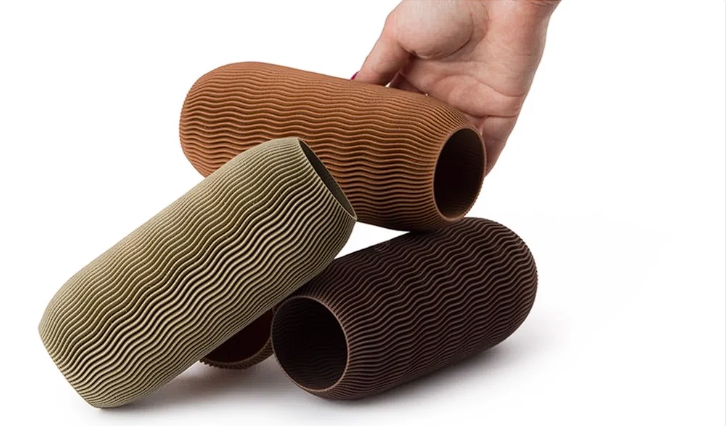
Fillamentum’s Timberfill is PLA-based, 100% biodegradable wood filament. Timberfill offers an excellent surface finish, making the parts really look like they’re carved out of wood.
Besides great mechanical properties for a wood filament, Timberfill also does a pretty decent job of hiding the layers. It also comes in four different colors, so you can choose the look of the final printed parts.
- Composition: 70% PLA, 30% wood
- Color options: Champagne, cinnamon, rosewood, light wood
- Diameters: 1.75 mm, 2.85 mm
- Spool size: 750 g
- Price per spool: ~$46
- Printing temperatures: 165-185 °C (hot end), 40-55 °C (bed)
FormFutura
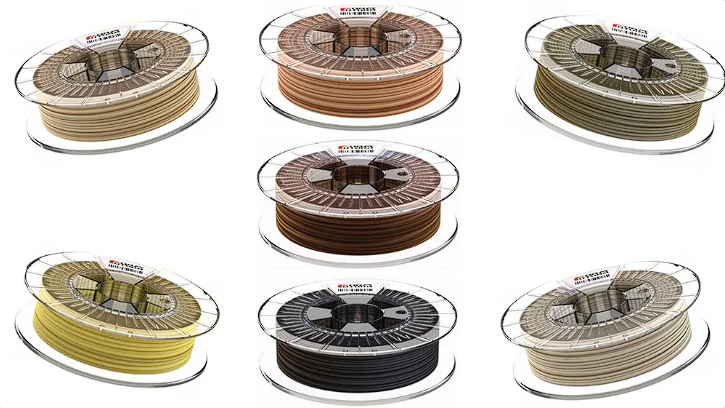
FormFutura is a Dutch filament manufacturer which offers a range of wood filaments called EasyWood. It comes in seven different colors and is claimed to be a warp-free filament.
A reasonable price and a large selection of colors make this filament a rather alluring choice for newcomers to the world of 3D printing wood.
- Composition: 60% PLA, 40% wood
- Wood options: Pine, cedar, olive, coconut, willow, ebony, birch
- Diameters: 1.75 mm, 2.85 mm
- Spool sizes: 250 g, 500 g, 2.3 kg
- Prices per spool: ~$20 (250 g), ~$37 (500 g), ~$153 (2.3 kg)
- Printing temperature: 210-230 °C (hot end), 0-60 °C (bed)
Hatchbox
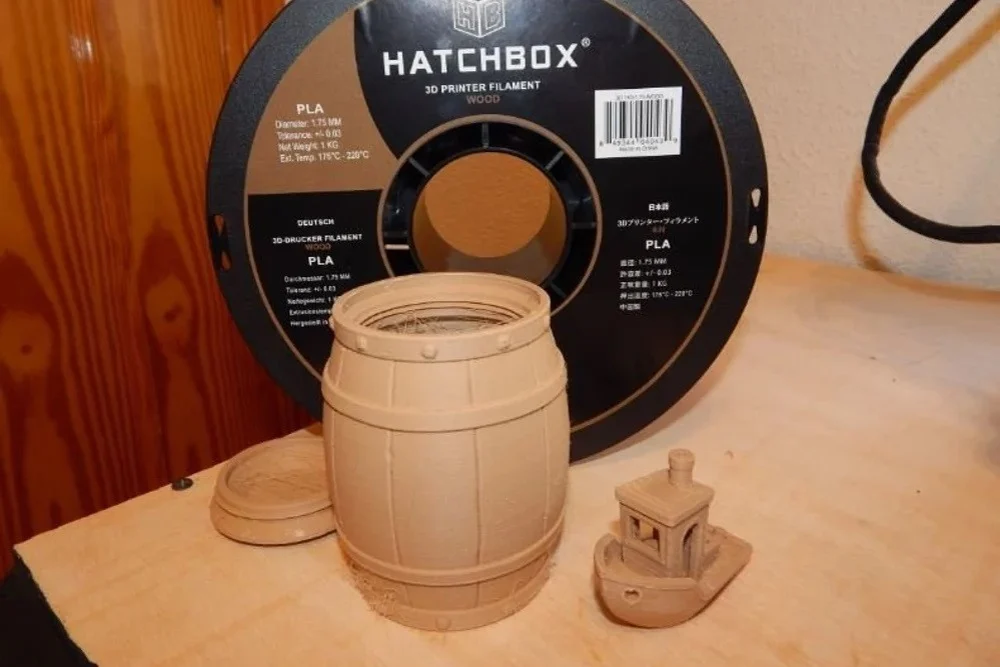
Hatchbox is quite a popular name in the filament world, so it’s not a surprise that the company is competing for a piece of the cake in the wood filament market. What’s great about Hatchbox’s wood filament is that it can be easily sanded, and it doesn’t necessarily require a heated bed to print with it. Smells nice, prints nice, looks nice, all for a reasonable price. What more could you ask for?
- Composition: 60% PLA, 40% wood
- Color options: Wood, black, brown
- Diameters: 1.75 mm, 3.00 mm (wood color only)
- Spool size: 1 kg
- Price per spool: ~$31
- Printing temperature: 180-220 °C (hot end), heated bed not required
Lay Filaments
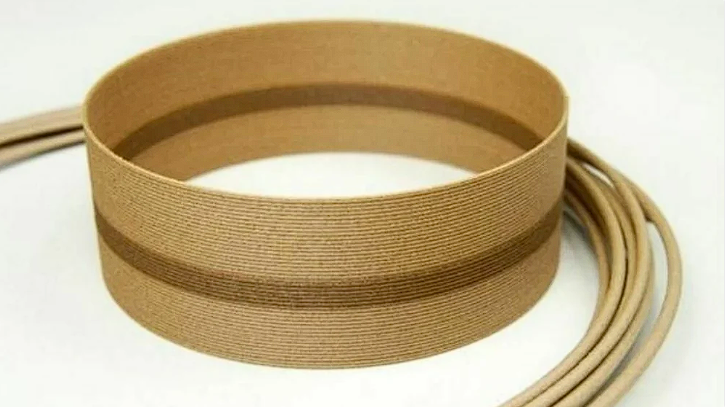
Lay Filaments is a unique brand, thanks to a large range of its functional filaments for 3D printing. German inventor and founder of Lay Filaments Kai Parthy was the first to ever create a wood filament. Lay Filaments has since launched a few types of its wood filament, with one of the more recent ones being the LayWood-Flex.
LayWood-Flex is made from up to 35% of wood fibers, a bonding polymer, and a flexibilizer. These ingredients try to recreate the feeling of natural wood in terms of surface finish, texture, flexibility, and even smell.
And it works! LayWood-Flex does look and feel like real wood. Therefore, parts made with it can be quite easily sanded and painted. The hot end temperature range is quite wide to allow for color-changing: increasing the temperature burns the wood particles faster, therefore creating a darker appearance.
- Composition: 65% PLA, 35% wood
- Wood option: Light cherry
- Diameter: 1.75 mm
- Spool size: 250 g
- Price per spool: ~$26
- Printing temperatures: 190-250 °C (hot end), heated bed not required
Polymaker
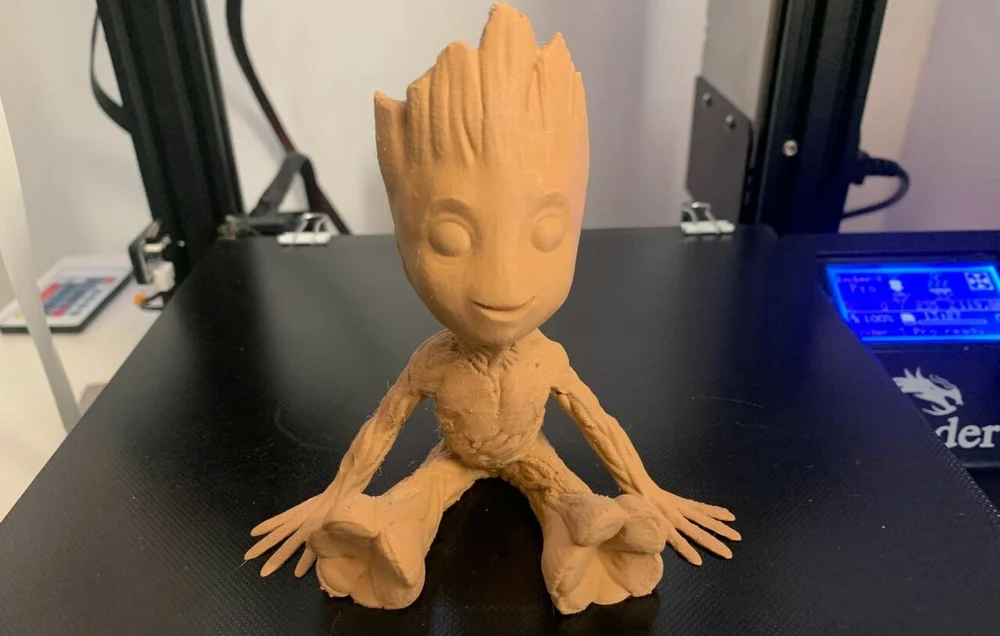
Polymaker is another popular 3D printing filament manufacturer, and PolyWood is the name of their line of wood PLA filament. PolyWood comes in both a 1.75- and 2.85-mm diameter, but there’s only one color for this filament, a light-colored wood that looks impressively natural.
Polywood is an unusual inclusion on this list as it doesn’t actually contain any wood fibers. Instead, a special “foaming” process was used to integrate the properties of wood into PLA plastic. As a result of this manufacturing technology, their wood filament is about 35-40% less dense than regular PLA filament, mimicking the density and appearance of wood.
Judging by the many online reviews, many users seem to like the texture and surface appearance that PolyWood yields on prints. However, it’s worth noting that this filament is a bit expensive, costing over $50 per kilogram.
- Composition: N/A
- Color option: Wood
- Diameters: 1.75 mm, 2.85 mm
- Spool size: 600 g
- Price per spool: ~$47
- Printing temperatures: 190-210 °C (hot end), 25-60 °C (bed)
SainSmart
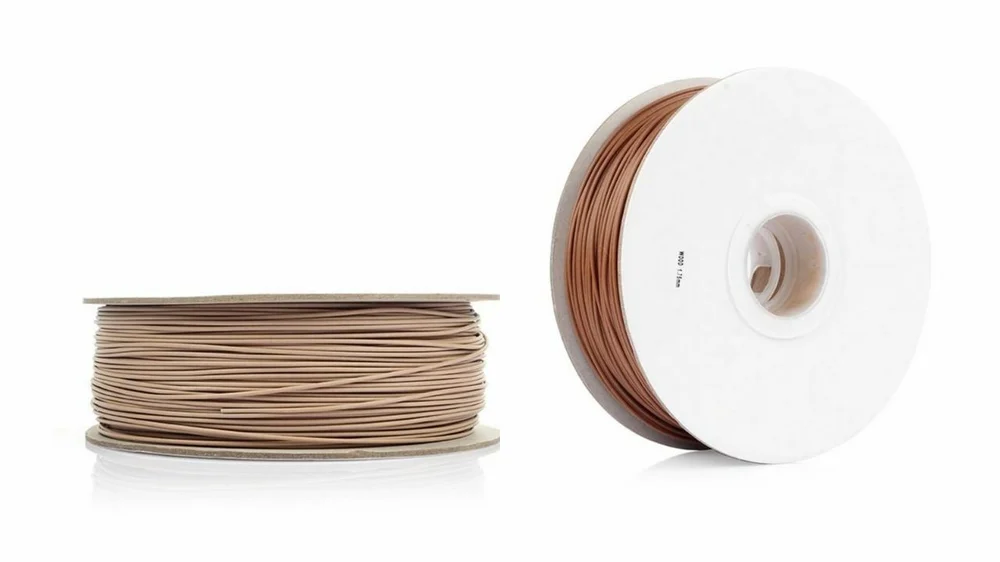
SainSmart is a large Chinese manufacturer of all kinds of goods that makers use. Their range includes equipment and accessories for CNC machining and 3D printing.
SainSmart offers a wood filament that consists 40% of wood, which is a rather high percentage. This definitely helps give the models a more realistic wood feeling. SainSmart’s wood filament comes in two shades of brown to give you the effect you’re looking for in your prints.
The reason why SainSmart’s wood filaments gained so many users is due to good pricing and high quality. As far as affordable wood filaments go, SainSmart should not be overlooked
- Composition: 60% PLA, 40% wood
- Wood options: Light brown, dark brown
- Diameter: 1.75 mm
- Spool size: 1 kg
- Price per spool: ~$36
- Printing temperature: 185-230 °C (hot end), 40-60 °C (bed)